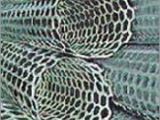The chivalry age is going to be revived, but unlike the medieval knights, the modern ones will wear polymer, not metal, armors.
Now, a project conducted by Florida State University researcher Okenwa Okoli, an associate professor of industrial and manufacturing engineering, is going to produce even lighter and effective body armor for the warriors of the future.
Okoli's team at the State College of Engineering and High-Performance Materials Institute have been investigating on bullet-proof body armor for U.S. military men and women. "If I can wear it and it's tested on me and it works, then yes, our soldiers can wear it. The military personnel utilizing this equipment need to maneuver very quickly, and as such, the less weight they have to carry around, the better", he said.
The team has been focusing on carbon nanotubes, a material much thinner than a human hair but harder than known stuff. Nanotubes are obtained from buckminsterfullerene, a specific type of carbon molecule which is extremely strong and light. The buckminsterfullerene (dubbed "buckyballs"), was discovered by a team from FSU which won the Nobel Prize for Chemistry in 1996 for this discovery.
The carbon nanotubes opened the age of the nanotechnology.
Okoli's team designed a composite manufacturing process to build lightweight body armor based on nanotubes that protects a soldier's legs, arms and head. "Metal traditionally has been used for such protective gear, but lightweight composites materials such as the ones produced by Okoli now can be used in place of heavier metals," said Jim Thagard, former FSU researcher.
Okoli collaborates with the U.S. Air Force to create bulletproof body armor for the force's parajumpers. "Because of the weight of the current body armor systems they have, it smacks them on the back. And the momentum of jumping from such a great height and the weight of the plates throws them off target, one, and can injure them, two. So it's not very user-friendly, even though they have to use it to protect themselves. Now, what we've done over the past year is create armor plates that are thinner and weigh less but still do the job", explained Okoli.
"There are many universities nationwide looking at lighter solutions to bulky body armor so that soldiers can better do their job in the field," he added. But FSU College of Engineering is the world leader in this research field due to the employment of nanotubes.

 14 DAY TRIAL //
14 DAY TRIAL // 
